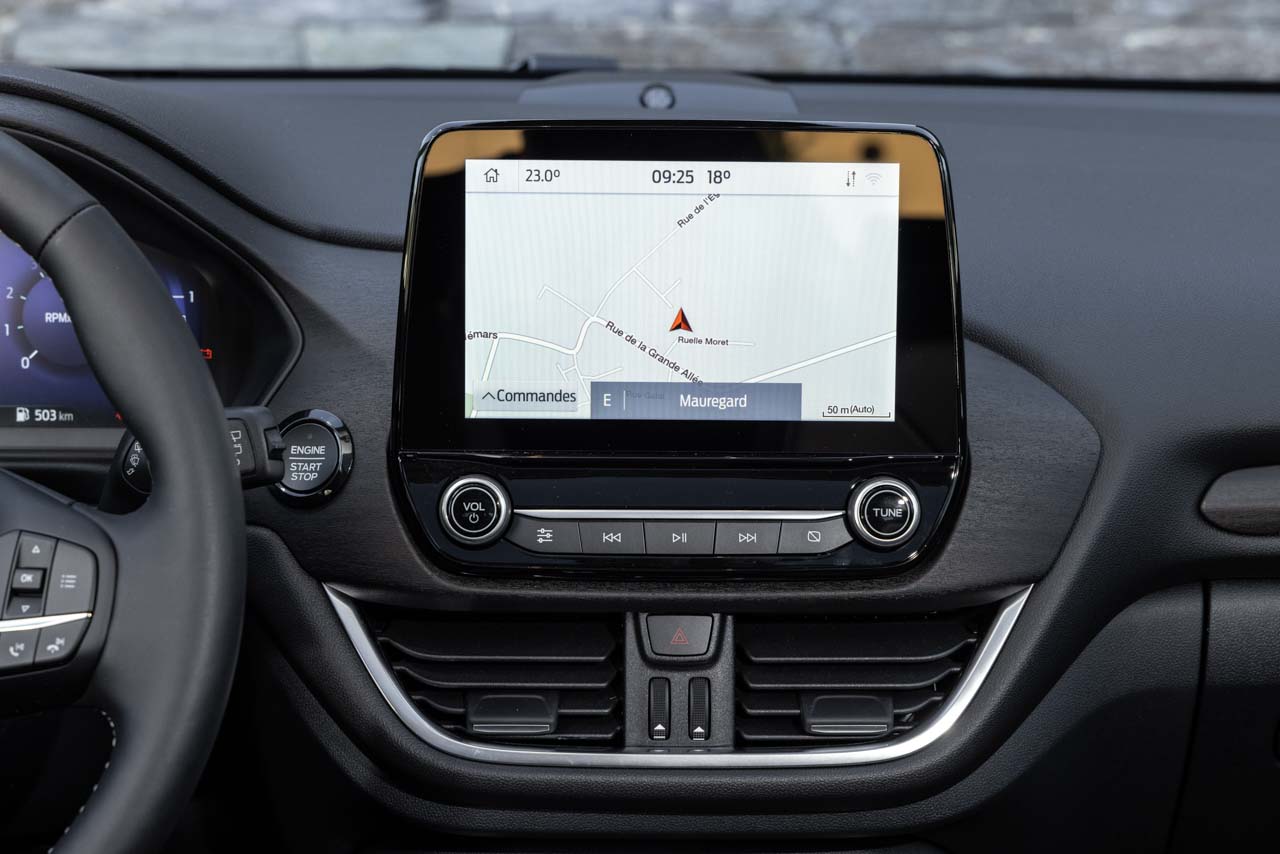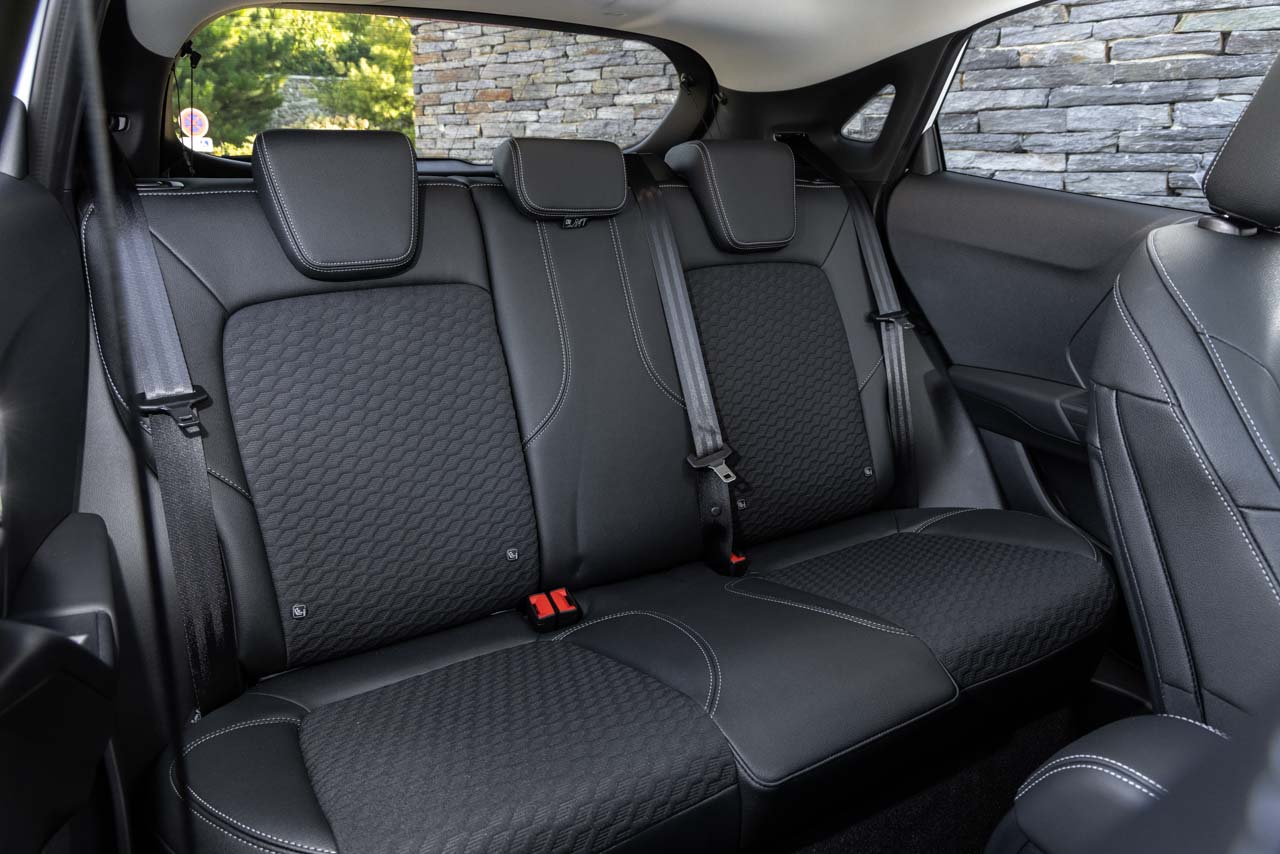
Faced with the inexorable rise in gasoline and diesel prices, the switch to superethanol E85 allows savings in use. Ford is rolling out a range of six compatible models today, including the Puma 1.0 Flexifuel 125 being tested here. The miracle solution?
Test car: Ford Puma 1.0 Flexifuel 125 hp
|
From€ 23,300
no bonus |
€ 1.82. This is the price, as of September 27, 2021, of a liter of unleaded 98 at the Total relay in Morainvilliers, on the A13 motorway. What to anticipate the probable crossing of the € 2 bar in the near future, one that seemed unthinkable just a few months ago. What to do when riding is essential? Switch to electric? Expensive to buy, and to use on long journeys when it is necessary to refuel at the expensive fast charging stations. Go back to diesel? Risky, given the growing number of urban areas which will ban it from 2024. There remains the solution of alternative fuels such as LPG, loved by Dacia and Renault, or superethanol (the famous E85), now compatible with six models at Ford.

Let us quote the Fiesta EcoBoost 125 (and its utility version Fiesta Van), the Focus mHEV 125, the Kuga 2.5 FHEV (becoming the first hybrid model E85), the Transit Connect, without forgetting our SUV of the day, the Ford Puma EcoBoost 125. Afterwards a modification of the injectors and of the engine calibration, each model can drink indifferently, in the same tank, unleaded or E85 bioethanol. In the latter case, overconsumption reaches 30% according to the WLTP certification cycle … immediately canceled by a price at the pump more than half the price: only 0.71 € the liter on average for E85 against € 1.59 for the unleaded 95 E10!
Puma Flexifuel price
Called Flexifuel, the Ford Puma “E85” is associated with the five available trim levels. It starts at 23,300 € titanium and peaks at € 29,400 in ST-Line Vignale (see price and cascade of equipment on next page). A price identical to that of the classic Puma EcoBoost 125, however equipped as standard with a slight hybridization here absent (it remains however on the Focus Flexifuel 125, go understand…). Another incompatibility: that with the robotic seven-speed gearbox, reserved for the 100% gasoline version.

The Puma Flexifuel is thus immediately profitable in use if it is fueled with superethanol thanks to a significantly lower fuel price and a gray card which, like the micro-hybrid version, becomes free in most metropolitan areas. (half price in Brittany and Center-Val de Loire). For the pros, remember that the VAT on this fuel remains recoverable at 80% (like gasoline and diesel), or even at 100% for commercial vehicles (only 80% for gasoline before the 1er January 2022). Thanks to 40% reduction in CO emissions2, the Puma Flexifuel is finally very far from risking the penalty. But, for now, the gasoline version does not suffer either.
Driving
The best time, behind the wheel of the Puma Flexifuel, is when you stop to refuel. We get out of the car not without pride, we open the fuel door, we grab the blue pistol and we press the trigger, looking towards the pump, with a smirk. At 0.71 € per liter on average, the euro counter scrolls much slower than that of the liters, to the point thata 20 euro bill is enough to escape with 30 liters of fuel. The first few times, you leave the station with the feeling of having ripped off the tanker and, if the diesel neighbor has noticed the deception over your shoulder, the satisfaction is all the better.

It is then time to set off again, and nothing alters our good mood during the first kilometers: the semi-high driving position is attractive, as are the neat ergonomics or the softness of the controls. The suspensions could better absorb the irregularities of the road at low speed, but we stay far from the “racket hits” felt in a previous Puma ST-Line X, with sport suspensions and nice optional 19-inch wheels as efficient in cornering as they are. inconvenient for the vertebrae.
In any case, the 1.0 Ecoboost 125 Flexifuel hardly invites you to increase the pace because it does not quite show the bravery that it was known to have. After very correct acceleration, there is indeed a lack of trunk when relaunching and encourages downshifting by one or even two gears when there is a need for power. Especially since here, no electric boost comes to support it. Conversely, the absence of slight hybridization serves driving pleasure during decelerations, much more marked on the mHEV version to regenerate the small battery.

This does not prevent having to finely dose the braking because the pedal, amorphous at the very beginning of the race, then makes the pads greedily bite on the discs a few millimeters later. A matter of habit. In town, the Stop & Start system remains fairly discreet and still does not regret the absence of light hybridization, whose alternator-starter usually smooths the restart of the three-cylinder.
What about overconsumption in all of this? Reasonable during our test, since our usual hilly motorway route ended in an appetite of 8.4 l / 100 km at 130 km / h. That’s 1.3 l more than the classic Puma EcoBoost 125, barely 20% more fuel consumption with 55% cheaper fuel. No need to have done extra math to foresee the savings made over the refueling …
On board





Competition
While urban SUVs are colonizing dealer showrooms (24 different models on the market, review our buying guide for small SUVs), few people use fuels other than unleaded, diesel or electricity. . The only exception is the Renault Captur TCe 100, which offers a dual-fuel petrol and LPG version. Liquefied petroleum gas is a little less widespread (1,550 stations against 2,500 for E85), slightly more expensive (0.88 € / l on average against 0.71 € / l) and does not offer everything makes the same ease of use: the handling the gun is a little more difficult, and the additional tank generally occupies the space of the spare wheel.


The savings in use are still very real, however, and are supplemented by free residential parking in certain urban areas. Faced with the Puma Flexifuel displayed between € 23,300 and € 29,400, the Renault Captur TCe 100 GPL is moving a little lower: € 21,950 in Zen, € 24,550 in Intens. Less standard equipment and more timid revivals on the road (less power of 25 hp) are compensated by a more dapper presentation, as well as by a more generous and flexible space thanks to the sliding bench seat. But here the choice will be made rather according to its proximity to a station distributing one or the other fuel.
Find the test report, the technical sheet and all the prices and equipment on the next page.

















